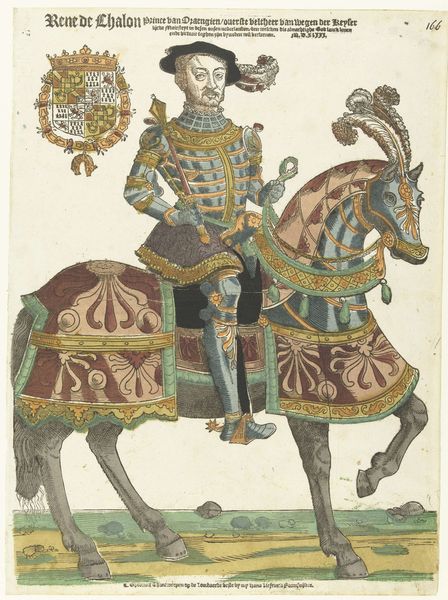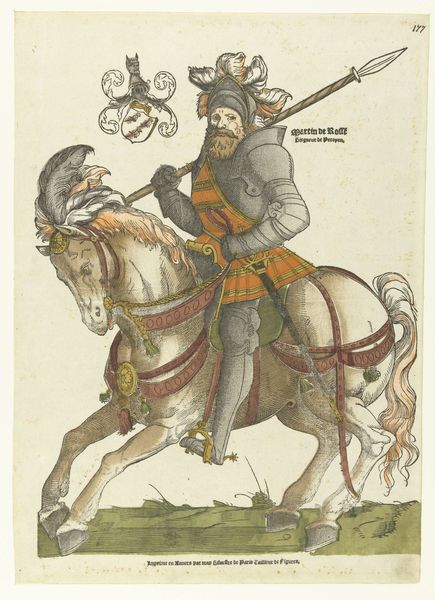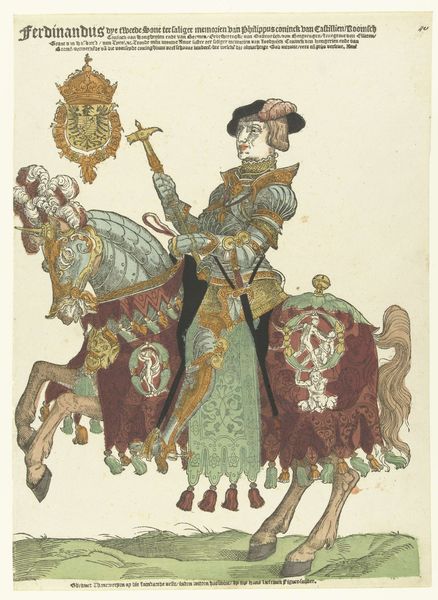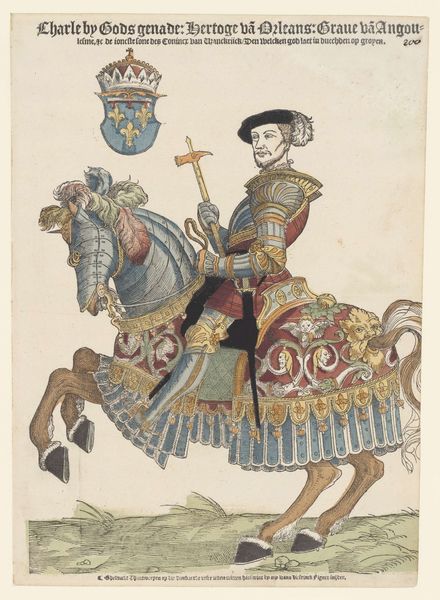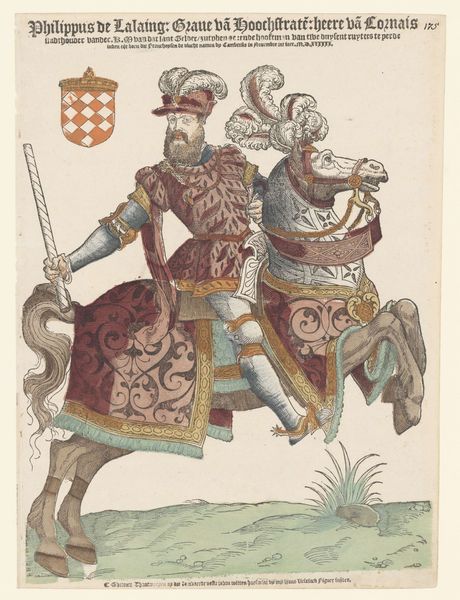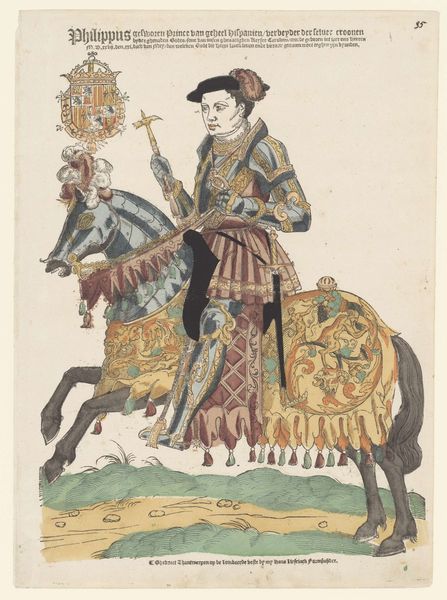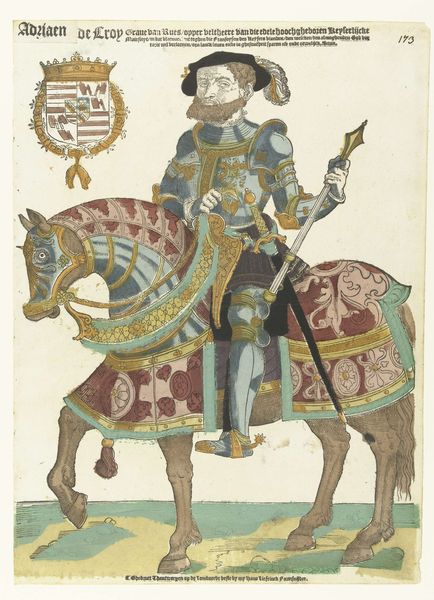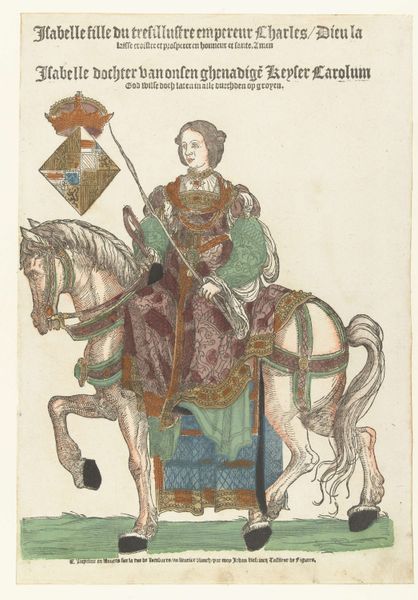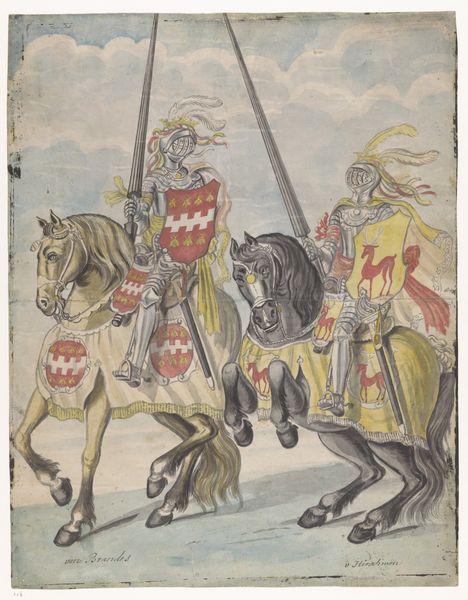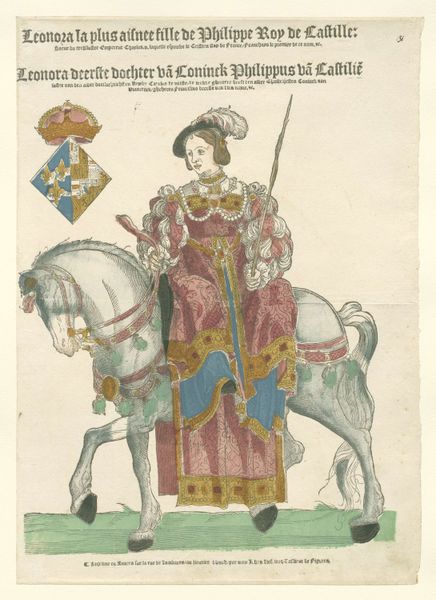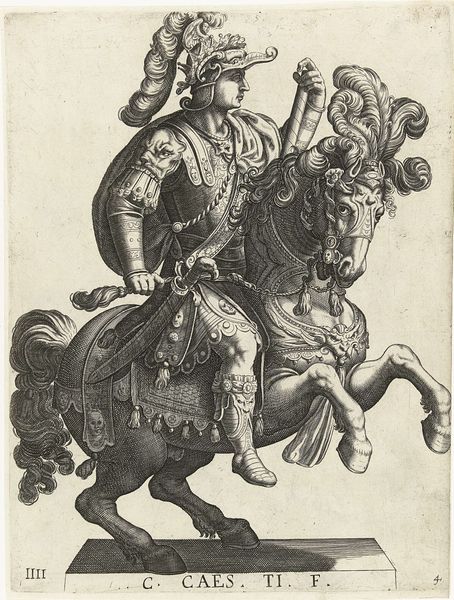
print, engraving
#
portrait
#
medieval
# print
#
traditional media
#
figuration
#
cityscape
#
history-painting
#
engraving
#
erotic-art
Dimensions: height 405 mm, width 295 mm
Copyright: Rijks Museum: Open Domain
Curator: Let's turn our attention to "Portret van Maximiliaan van Buren te paard," an engraving by Cornelis Anthonisz. from before 1543. It's currently held here at the Rijksmuseum. Editor: My first impression is of a richly textured surface. The detail achieved with engraving is quite remarkable, especially in the armor and horse trappings. The colors, while muted, give the image a delicate, almost ethereal quality. Curator: Absolutely. Beyond its technical mastery, the portrait offers a window into the aristocratic power structures of the period. Maximiliaan van Buren wasn’t merely a nobleman; he was part of the Habsburg network. Anthonisz.’s representation underscores this through its depiction of military regalia alongside, for example, those figures rendered on the horse’s saddle blanket that invoke classicism. It's about asserting a historical and familial claim to power and prestige. Editor: Yes, and there’s a conscious manipulation of visual planes here that reinforces the reading of power and prestige. Note how the flatness of the background emphasizes the three-dimensionality of the figure and the horse, particularly in the way the light seems to catch the metal of the armor. It draws the eye and isolates Maximiliaan, making him appear monumental despite the work's actually diminutive scale. Curator: His gaze is carefully constructed, isn’t it? Rather than offering direct eye contact, there's a detachment—a controlled distance from the viewer. And, looking to his outfit again, the artist uses ornament to signal wealth and authority: the patterned textiles, the tassels, the metalwork, all symbols readily understood within the cultural milieu. They served to differentiate, and legitimize, the nobility as inherently separate from other societal groups. Editor: Agreed. But I think focusing on such elements only as historical signifiers misses a key point of the visual construction. Look at how the repeated circular motifs, in the armor, the saddle decoration, the feathered hat—they create a kind of visual rhythm, unifying the image and guiding our eye, irrespective of their historical context. Curator: It is a work that certainly repays sustained looking, a compelling record of period conventions of portraiture and power relations. Editor: Precisely, and offers rewards by examining it's meticulous details and compositional harmony.
Comments
No comments
Be the first to comment and join the conversation on the ultimate creative platform.

